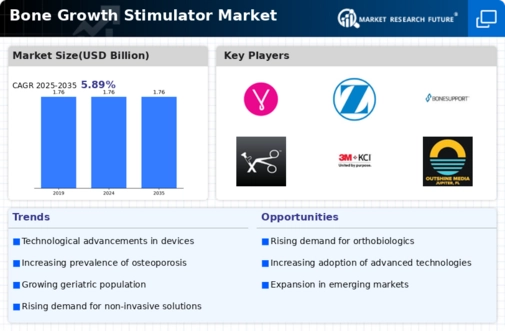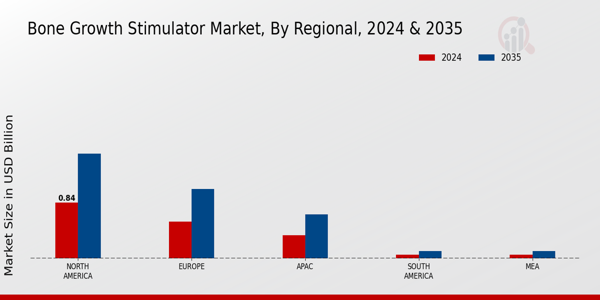Market Trends
Key Emerging Trends in the Bone Growth Stimulator Market
The market of Bone Growth Stimulators is witnessing a notable evolution that is the expression of being the solution that is not invasive and that is the one which is advanced in terms of enhancing the process of bone growth and regeneration. Specific example is the popularity of worn and portable type of bone growth stimulator. These machines are usuallyexternally applied either as straps,wraps, or panels focused on providing continuous electrical or sonic stimulation, promoting bone repair. This tendency suits the paradigm of creating for the patients of providing with home-based, effortless, affordable, and pain-free solutions to make unnecessary together long hospitalization, challenging methods of bone treatment and starring the patients-oriented approach to bones regeneration.
On the other hand, the described development of multimodal os bone stimulators that utilize different methods of stimulation (Pulsed electromagnetic fields (PEMF) and Low-intensity pulsed ultrasound (LIPUS)) will also have an influence on the bone growth. Such polytherapy devices may be used to harness the interacting effects of diverse stimulation methods for the restoration and healing of bone. This proves that further research is needed in order to determine the best methods of bone growth stimulation- individually tailored if needed- and which characteristics should be taken into consideration when choosing a treatment method.
Similarly, the advent and enhancement of smart and connected technologies in the field of the bone growth stimulator are attracting investments. Wearable smart bone growth devices scan data, are connected, and present health status information of a patient to medical service means in real time. This occurrence demonstrates the appropriation of digital health solutions in the system, which adds the component of informed and data-based decisions to bone healing management.
Besides this, it is clearly seen as a significant potential of bone growth implants is forming. These implants are mounted adjacent to the location of the fracture/injury of bone. The purpose of the implants is to produce localized and continuous stimulation on the bone. Implantable BGS devices provide a more targeted and focused solution to treat the bone issues in spite of the fact that external stimulations do not always bring satisfactory results and effectiveness. The need for innovative answers in orthopaedic and trauma realm could direct development of this trend.
On the other side, the adoption of regenerative medicine approaches for bone growth stimulation is another key in this mix. Adoption and implementation of growth factors and stem cells as well as tissue engineering techniques into existing bone growth stimulators to improve the regenerative ability is being investigated. Thus, during this period, we are able to observe the largest extent of replacement of traditional therapies with regenerative ones in the entire healthcare sector - as the intention is not only to boost the generation of bone tissue but to facilitate the formation of practical and structurally sound bone tissue as well.












Leave a Comment